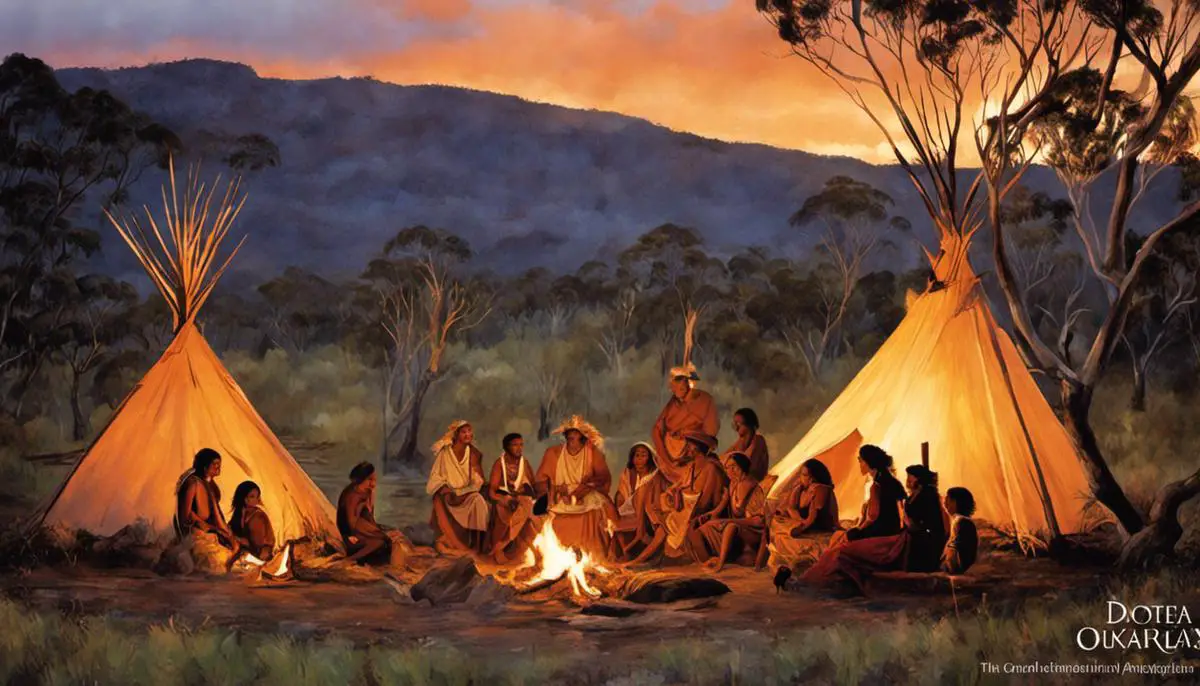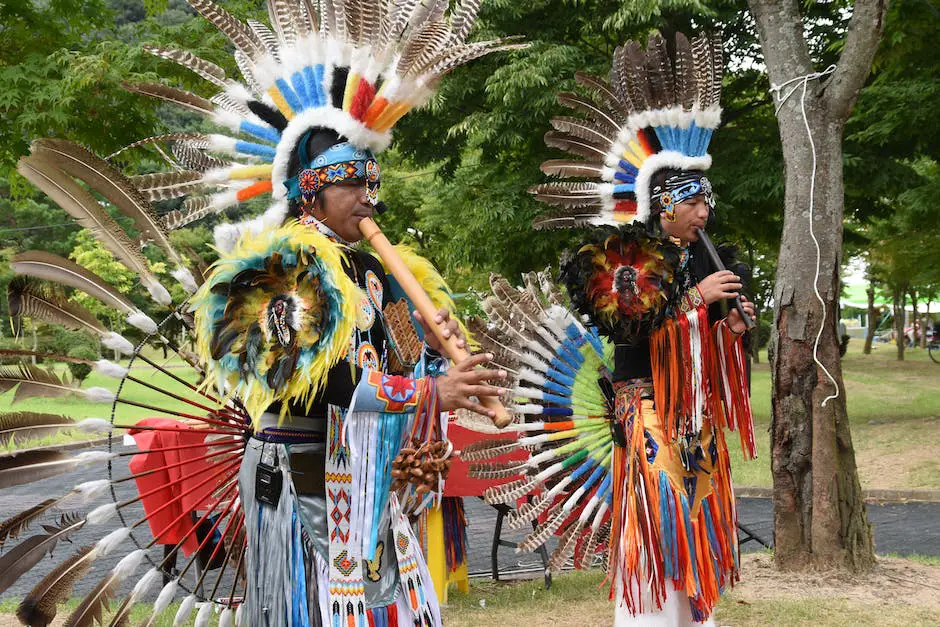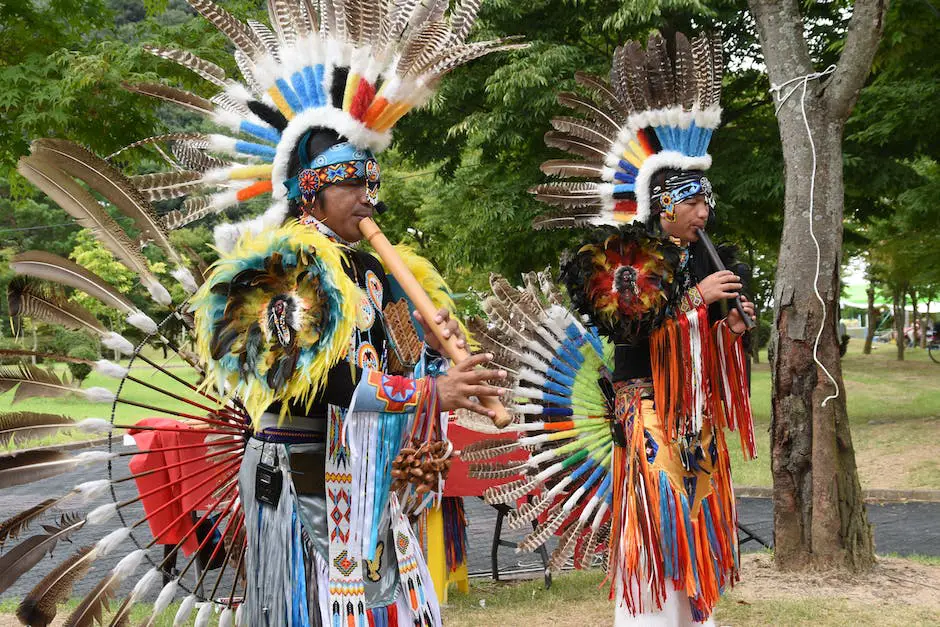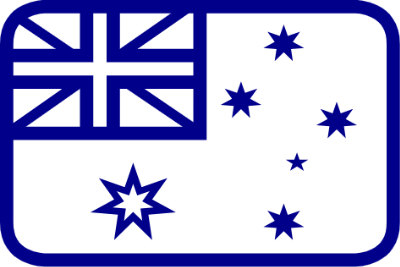Often hidden in the shadows of Australia’s modern, urbanized society, the Aboriginal Australians possess a vibrant and deeply rooted culture that goes back thousands of years. They are a unique race, holding not only a strikingly distinctive genetic makeup but also an indigenous history, language, and cultural practices that set them apart. Understanding the intricacies of the Australian Aboriginal’s historical lineage, anthropological aspects, genetic studies, and the challenges they face is crucial for a holistic perspective. This delve into their world will offer a fascinating exploration of who these resilient and richly cultured people are, tracing their continuous struggle for survival, rights, and the preservation of their culture.
Historical and Archaeological understanding of Australian Aboriginal Race
Unearthing the Past: Archaeological Evidence of the Race and Origin of Australian Aboriginals
The fascinating narrative of human evolution, migration, and origin is frequently embellished through groundbreaking archaeological discoveries. A particular area worthy of this detailed investigation is the Aboriginal population of Australia, considered one of the oldest continuous cultures on Earth.
Strong archaeological evidence lies at the foundation of this ongoing investigation. One clear testimony comes from Mungo Man, the oldest skeletal remains found in Australia at the very location known as Lake Mungo in New South Wales. The distinguished findings, dated back to 40,000 years ago, have allowed a deeper understanding of the Aboriginal population’s ancestry.
Mitochondrial DNA plays a crucial role in tracing the genetic history of populations. With the advancement of scientific techniques, ancient DNA from Mungo Man has been examined, rendering intriguing findings. The results show that Australian Aboriginals have a long, independent history outside Africa predating the 72,000-year global migration hypothesis. This substantiates the theory of multiple human migrations out of Africa.
From a similar pool of archaeological evidence, significant linguistics research brings clarity into this intriguing picture. The Pama-Nyungan, a ubiquitous language family spoken across 90% of mainland Australia, offers a treasure trove of data. This study suggests the eastward migration within Australia around 6000 years ago, a fact that ascertains Aboriginal population’s extensive history of inhabitation.
Another compelling piece of evidence emerges from the Madjedbebe rock shelter in Northern Australia, where approximately 60,000-year-old artifacts have been found. Utilized tools, pigments, and plant-based food remains indicate a highly advanced hunter-gatherer society. The antiquity of such artifacts recalibrates the timeline of human habitation in Australia, while reaffirming that the Aboriginals are directly descended from the continent’s first inhabitants.
Moreover, depictions in ancient rock art, spread across the continent’s vast landscape, chronicle Aboriginals’ deep-rooted cultural identity. The Bradshaw paintings (Gwion Gwion) in Kimberley region are representations of a complex and rich civilization, providing key insights into the spiritual and artistic endeavors of the Aboriginal societies.
In the final analysis, archaeological findings have irrefutably traced the race and origin of Australian Aboriginals back to one of the first waves of human migration from Africa. The intricate tapestry of evidence weaves a story of a rich and diversified culture flourishing in an ancient, unforgiving landscape. This not only illuminates the origins and pathway of this resilient group but also strengthens our comprehension of human evolution as a whole.

Anthropological Overview of Australian Aboriginal Race
Exploring the Anthropological Uniqueness of Australian Aboriginals
As the conversation around Australian Aboriginals progresses, it becomes increasingly clear that this group, with its intricate tapestry of cultural history, provides an exceptional anthropological lens. Beyond what has already been examined about Mungo Man, mitochondrial DNA, and multiple human migrations out of Africa, there remains much to explore.
Interestingly, the unique anthropological niche filled by Australian Aboriginals begins with their genealogical distinctness. Early groups are believed to have migrated to Australia around 70,000 years ago. Their separation from other human populations has resulted in a degree of genetic divergence rarely found elsewhere. This divergence has fostered the development of a host of physical and genetic characteristics distinct to Aboriginals, further accentuating their anthropological importance.
Aboriginals’ reason for migration remains an intriguing anthropological question. Several theories posit that changes in climate may have played a significant deterrent role driving the early humans away from Africa and towards the Indo-Pacific region. Such a large-scale and early migration shows a remarkable adventurous spirit and adaptability that holds much anthropological significance.
Australian Aboriginals’ conceptualization of the relationship between man and environment is expressed through the unique institution of the ‘Dreamtime’. This complex network of beliefs, myths, religious and familial relationships, and rituals form the backbone of their cultural heritage. Studying ‘Dreamtime’ offers unparalleled insights into their understanding of nature, existential philosophies, and the human spiritual journey.
Another remarkable aspect of the Aboriginal culture that differentiates them anthropologically is their oral storytelling tradition. Unlike many cultures worldwide, written records or literature are not dominant in Aboriginal culture. Their history, wisdom, and spiritual beliefs have been passed down through countless generations by spoken word. This practice points towards an extraordinary memory culture and showcases the importance of spoken language in their societal construct.
The study of totemic system within Aboriginal culture also provides extraordinary anthropological insights. Each Aboriginal is traditionally associated with a specific totem, often an animal or plant, which is believed to be a spiritual ancestor. It showcases their unique kinship system and complex social organization, a field ripe for anthropological study.
Fire management practices of the Australian Aboriginals speak volumes about their deep understanding and interaction with the environment. They perfected a method of controlled burning, which not only prevented larger bushfires but also facilitated hunting and regeneration of vegetation. These practices elucidate the intricate knowledge Aboriginals possessed about their environment, an exemplary model of early sustainable living practices.
In conclusion, untangling the anthropological strands within the colourful tapestry of Australian Aboriginal culture continues to reveal unforeseen layers of rich human history. Their unique contributions to human genetic diversity, societal organization, remarkable memory-based culture, and immeasurable environmental wisdom confirm the invaluable place they occupy in global anthropological context. Their continual survival, resilience, and vibrance stand testament to the indomitable human spirit, serving as an inexhaustible resource for further anthropological study.

Genetic Studies and Australian Aboriginal Race
The pervasiveness of genetic research in the spheres of anthropology and bioscience continues to unveil insights into humanity’s past in a manner scarcely conceivable a century ago. The character and race of Australian Aboriginals have remained at the forefront of these investigations, revealing the remarkable depth of their genetic identity.
High-throughput microarray technology has fostered a breakthrough in evaluating the genetic composition of the Australian Aboriginals. Recent analyses of modern and ancient genome-wide data present substantial evidence to contradict the monolithic perception of human evolution. Contemporary genetic studies propose Australian Aboriginals have a diverse genetic lineage, attributed not only to their African ancestry but also to contributions from now-extinct hominid populations such as the Denisovans, that diverged around 72,000 years ago.
The sequencing of the Aboriginal genomes was an important revelation, unfurling an ancient genetic ancestry that predates the Out of Africa migration of anatomically modern humans which occurred around 55,000 to 70,000 years ago. This discovery broadens the understanding of early human dispersals and acknowledges Aboriginal Australians as descendants from one of the earliest branching lineages.
More comprehensive data also indicate Aboriginal Australians biologically diverged from Eurasians 50,000 to 70,000 years ago, following their early migration. Interestingly, this divergence happened long before the division of Europeans and Asians, thus assigning a unique position to Australian Aboriginals in the global population structure.
Reaffirming the biochemical outcomes, anthropological research enumerates Aboriginal Australians’ presence on the continent for approximately 50,000 years. Genetic representation from diverse regions of Australia confirms significant population structure prior to European contact. This affirms the lineage of Aboriginal Australians as one of the world’s oldest living cultures, providing a homogenous genetic continuity across generations.
The isolation of Australia, post the initial colonization, enabled Aboriginals to evolve independently, resulting in a unique genetic identity. Their attributes, such as high physical endurance and particular resistance to certain environmental diseases, can be linked to natural selection and genetic adaptation processes.
Understanding the genetic heritage of the Aboriginal Australians also has profound implications for medical research. For instance, Aboriginal people’s unique genetic makeup offers insights into human response to environmental challenges, contributing to the fields of personalised and preventive medicine.
The dense and rich tapestry of Australian Aboriginals’ genetic heritage is upheld by their splendidly rich cultural nuances. The genetic distinctness and enduring evolutionary history of Aboriginal Australians aren’t just an anthropological curiosity but an emblem of human survival, resilience, and adaptability. Their genetic and cultural odyssey teaches poignant lessons on humankind’s journey and offers precious opportunities for learning and preservation. Esteemed knowledge from genetic research intertwines with cultural wisdom to underline the supreme importance of Australian Aboriginals to human history and ongoing cultural and genetic diversity.

Impacts and Challenges faced by Australian Aboriginal Race
At the crossroads of physical anthropology and modern scientific endeavors, we understand the intricate relationship between Australian Aboriginals and modern Australia. This relationship is characterized by a series of impacts and challenges that have transmuted the canvas of their existence and their interaction with today’s Australia.
One fundamental aspect to consider is the dichotomy of historical continuity and societal discontinuity. Based on the evidence from ethno-historic records, there is an incontrovertible sense of historical continuity within the Aboriginal culture. Their sophisticated social structures and unique cultural practices exemplify not only their intense heritage but their adaptability as well.
However, these traditional Aboriginal societies faced an abrupt discontinuity with the advent of British colonization in the late 18th century. Consequentially, this marked the beginning of systemic discrimination, dispossession, and forced assimilation. The differential power dynamics that this instigated led to an erosion of indigenous rights and empowerment.
Significantly, the impact of colonization was not merely socio-cultural but extended to a bio-demographic context as well. The indigenous population experienced distinct shifts in health and demographics, spurred largely by the introduction of diseases previously unknown to them and changes in dietary patterns.
Transitioning into the 20th century, the policy of ‘protectionism’ resulted in the forced removal of Aboriginal children from their families — a dark period often referred to as ‘The Stolen Generations’. This systemic dispossession of children had severe psychological implications, disruptively impacting kinship ties and consequently, their sense of identity and community belongingness.
Moreover, Aboriginals faced extensive impediments in their quest for equal rights and recognition. It was not until the 1967 referendum that they were included in the Commonwealth census and were recognized by the federal government to make laws for them. This latent recognition of fundamental rights elucidates the depth of the challenges faced by indigenous populations in modern Australia.
Interestingly, in a contemporary context, the picture discerned is double-edged. On one hand, Aboriginal Australians continue to face significant socio-economic disadvantages, with higher rates of unemployment, lower levels of education, and lower life expectancies in comparison to non-indigenous Australians. On the other hand, there has been a marked resurgence and reinvention of indigenous cultures, be it through the revival of native languages, indigenous arts, or tribal remedies; underscoring the undying resilience of Aboriginal culture.
In the realm of environmental conservation, there has been a growing resonance for the incorporation of indigenous knowledge systems. The melding of traditional Aboriginal methods with modern techniques has proven particularly efficacious for wildlife conservation efforts and land management, embodying a striking manifestation of cultural persistence and adaptive dynamism.
Conclusively, mapping the impacts and challenges faced by Aboriginal Australians necessitates an understanding imbued with complexity and nuance. From surviving the vestiges of colonization to forging a path in modern-day Australia, their journey illuminates an undeniable testament to endurance and adaptability. It compels us to constantly reassess our comprehension of their collective memory, modern identity, and their undeniable contribution in shaping the cultural and genetic fabric of humanity.

The journey through the primitive yet sophisticated world of the Australian Aboriginals reveals a powerful tale of humanity’s diversity and indigenous heritage. Each facet of their lives, be it historical, anthropological, or genetic, has formed a complex tapestry that defines the Aboriginal race. These primal people have skillfully adapted and preserved their cultures despite significant odds, testifying to their great resilience. Their contemporary challenges reflect the need for more understanding and practical measures that can help them safeguard their unique culture, heritage, and identity. Through global awareness, sympathy, and active involvement, we can aid in the Aboriginal Australians’ ongoing fight against inequality and aid in their celebration of their distinctive cultural essence.






